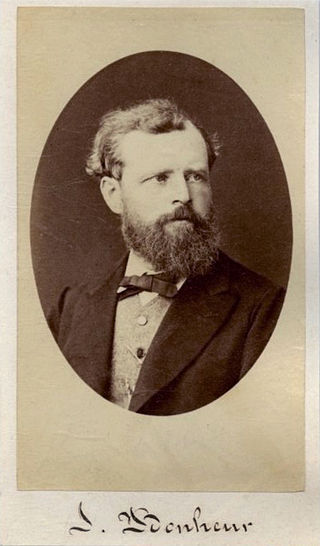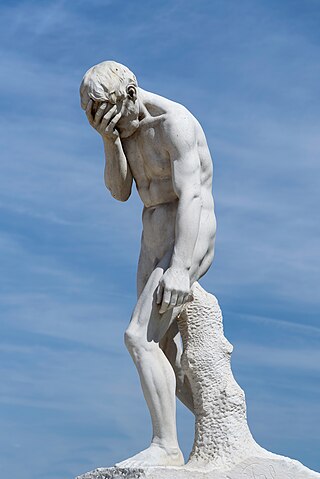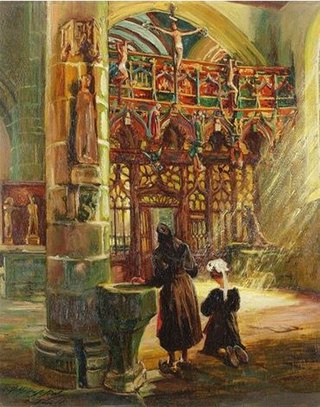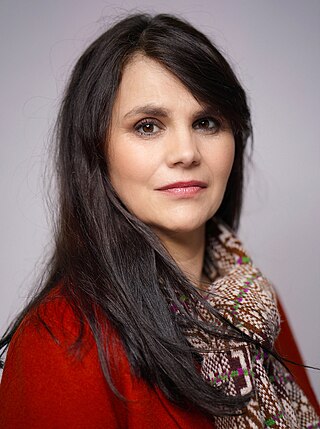
Henri Guinier (20 November 1867, Paris - 10 October 1927, Neuilly-sur-Seine) was a French portrait and landscape painter.

Henri Guinier (20 November 1867, Paris - 10 October 1927, Neuilly-sur-Seine) was a French portrait and landscape painter.
Due to his father's pressure, he joined the "École des Arts et Métiers" (Arts and Sciences) of Châlons-sur-Marne in 1883, as an engineering student, and graduated in 1889. But then, he took courses at the Academie Julian and the École des beaux-arts in Paris, being attached to the studios of Jean-Joseph Benjamin-Constant and Jules Lefebvre. In 1896 he was awarded second prize in the Prix de Rome, followed by a gold medal at the Salon des artistes français in 1898. In that year he won a bursary which took him to Holland, Switzerland and Italy. He also won a silver medal at the great Paris 1900 "Exposition universelle". [1]
In 1904 he married Hélène Glaçon and they had a son, Michel, and a daughter, Annette. Michel was an engineer and worked on the Paris Métro. Annette was one of her father's favourite models. Michel was also an expert on musical organs.
It was in Paris that he made the acquaintance of fellow artist, Fernand Legout-Gérard, who introduced him into the artists' community at Concarneau where he purchased a villa called Kerdorlett, by the beach and facing west. This became his summer residence while winters were spent at his house in Neuilly-sur-Seine. He became the president of the "Union artistique des Amis de Concarneau" whose membership included painters such as Alfred Guillou and Thomas Alexander Harrison, an american painter who stayed frequently at Pont-Aven in the summer.
He was an excellent pastellist and colorist and painted many portraits, mostly of women. He painted landscapes and marine views, mostly around Concarneau and the Pays Bigouden, as well as Le Faouët, Vannes, Paimpol and the Île-de-Bréhat. [2]
He painted many subjects: the allegorical, genre works, nudes, portraits and the countryside, and spent time in Italy, Holland, the Alps and the Pyrénées. [3]
He also received many public commissions including, in 1909, with several other artists, the decoration of the Neuilly-sur-Seine townhall for which he painted the composition La Tapisserie. [4] The Ministry of War commissioned him to paint scenes from the battlefield at Verdun where he completed several pastels.
From 1920 onwards, he passed part of the winters in the mountains and painted scenes in both Pau and Argelès-Gazost as well as in the valley of the Chamonix. [5]
In 2007, the family gave their archives to the museum in Quimper- the "Musée départemental Breton". In 2008, the museum of Le Faouët held a retrospective exhibition of his work.

The Musée de Cluny, officially Musée de Cluny-Musée National du Moyen Âge, is a museum of medieval art in Paris. It is located in the 5th arrondissement of Paris, bordered by square Samuel-Paty to the south, boulevard Saint-Michel to the west, boulevard Saint-Germain to the north, and rue Saint-Jacques to the east.
Henri Alphonse Barnoin was a French painter born in Paris in 1882.
Michel Laclotte was a French art historian and museum director, specialising in 14th and 15th century Italian and French painting.

René-Paul Schützenberger was a French Post-Impressionist painter.

Isidore Jules Bonheur, best known as one of the 19th century's most distinguished French animalier sculptors. Bonheur began his career as an artist working with his elder sister Rosa Bonheur in the studio of their father, drawing instructor Raymond Bonheur. Initially working as a painter, Isidore Jules Bonheur made his Salon debut in 1848.

Henri Biva was a French artist, known for his landscape paintings and still lifes. He focused primarily on the western suburbs of Paris, painting outdoors in the plein-air tradition; his style ranging between Post-Impressionism and Realism with a strong Naturalist component. Biva's pictures are characterized by intricate strokes and a pure palette bathed with warm natural light. The artist was a member of the Société des Artistes Français and a Knight of the Legion of Honour.

Henri Paul Royer was a French painter, remembered especially for his genre works from Brittany. A painter of genre, portraitist and landscape artist, he travelled both in America and Europe during his life.

Henri Clément Serveau, also known as Clément-Serveau, was a French painter, designer, engraver and illustrator. Clément-Serveau produced works in a realist manner early on, but soon became interested in the new movements. He was influenced by his friend Louis Marcoussis and experimented with Cubism, utilising geometric patterns to give the illusion of form and space. Later in his career he turned toward abstraction with a post-cubist stance. He designed banknotes for the Banque de France and produced large murals and participated in numerous French and international exhibitions.

Alfred Guillou was a French painter of Breton heritage.

Henri Vidal was a French sculptor known for his 1896 sculpture, Caïn venant de tuer son frère Abel which is in the Tuileries Garden in Paris. Vidal was a student of Mathurin Moreau.

The Réunion des Musées Nationaux (RMN) is a French cultural umbrella organisation, an établissement public à caractère industriel et commercial (EPIC), formed in 2011, through the merger of the Paris National Museums and the Grand Palais.
Jean-Baptiste Jules Trayer was born in Paris in 1824 and died in 1909. He was a French painter. He signed his works "Jules Trayer".

Arthur Midy was a French landscape and genre painter.
Marie Étienne Pierre Paul Aimé Buffet, known as Étienne Buffet, was a French painter.

Julie de Cistello, or Julie de la Bourdonnay Cistello, known as Vicomtesse de Sistelo was a Portuguese-Brazilian impressionist painter in the late 19th and early 20th centuries, a pioneer in women's access to art education, and one of the first Portuguese-Brazilian women artists in the annual Parisian Salons. Her name in Portuguese is Júlia Labourdonnay Gonçalves Roque.

Portrait of Marguerite de Conflans is a c.1876 oval oil on canvas portrait by the French painter Édouard Manet. It is owned by the Musée d’Orsay, though it is on display in the red salon at the Musée des Augustins in Toulouse. Like A Bar at the Folies-Bergère, the work mimics Ingres in its use of a mirror to show the figure from several angles, a motif rarely used by Manet.
Josette Hébert-Coëffin was a French sculptor, medallist and a recipient of a 1937 Guggenheim Fellowship.
Antoinette Asselineau was a French painter born in Hamburg, Germany.
Suzanne Estelle Apoil was a French porcelain painter and watercolorist.

Cécile Debray, born November 20, 1966, is a French museum director, art historian and curator, specialist in modern and contemporary art in painting.